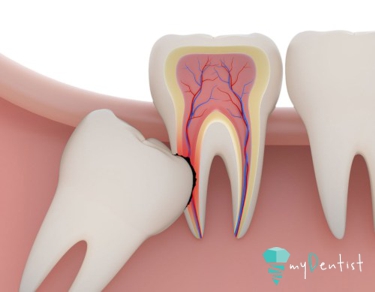Semi-enclosed and enclosed wisdom teeth

An adult usually has 32 teeth, 16 in the upper jaw and 16 in the lower. However, there is usually room for only 28 teeth to grow properly.
The last four teeth that rise in the mouth, the third molars (wisdom teeth) try to find space in the jaw to grow.
When the jaw and gums allow these teeth to grow properly, which is not often, these teeth remain in place and we do not remove them.
Very often, however, the jaw and gums do not allow growth and so these teeth can move sideways causing problems in neighboring teeth or remain partially or completely under the gums, even inside the jaw bone.
When they have partially erupted (semi-enclosed wisdom teeth), bacteria and food debris enter through the opening in the gum, resulting in inflammation, resulting in swelling (edema), pain, and even fever.
When they have not erupted (enclosed wisdom teeth), they put pressure on the neighboring teeth as well as on the jaw bone and gums.

The pressure exerted on the neighboring teeth can damage the natural arrangement of the teeth but also cause even bigger problems, damaging them or even breaking the roots.
The appearance of cysts and tumors around the enclosed wisdom teeth is often observed, causing the gradual destruction of the jaw bone and the adjacent teeth.
The dentist, with the clinical examination and with the help of a panoramic x-ray, examines the image of the wisdom teeth, when they are semi-enclosed or enclosed, and proceeds to remove them if this is necessary to prevent immediate or future problems.




